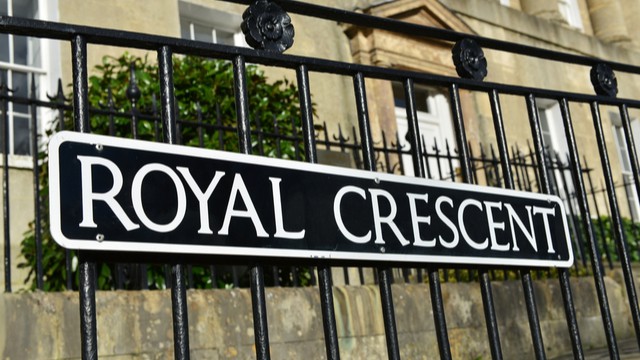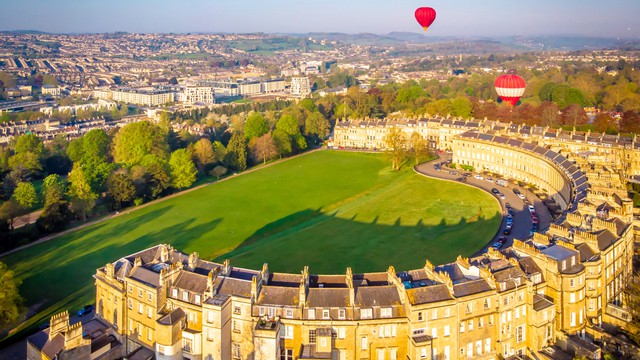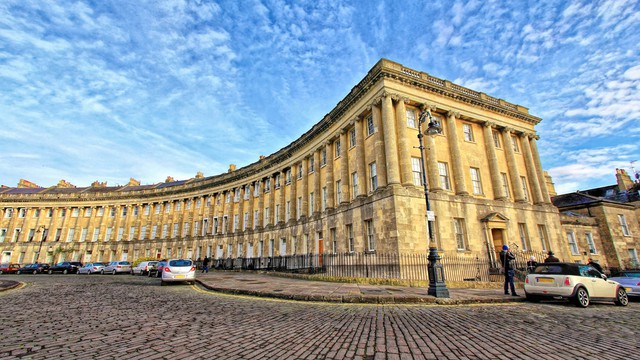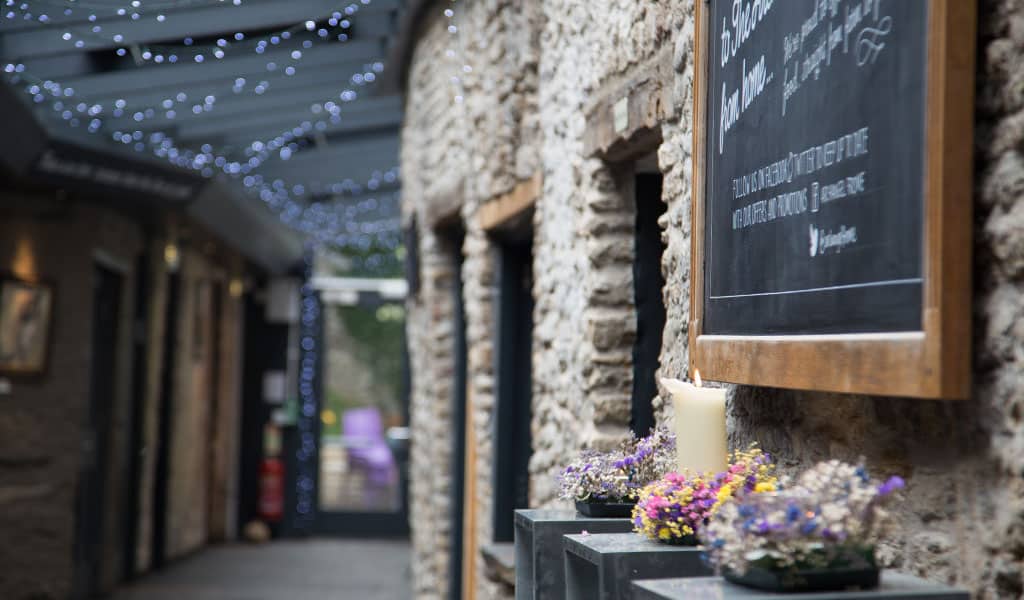The Royal Crescent: Bath’s Famous Georgian Semi-Circle
A sweeping semi-circle of terraced, honey-hued houses, the Royal Crescent is a stunning example of Georgian architecture and one of Bath’s major tourist attractions.
Stunning Georgian Architecture Just 30 Minutes (15 Miles) Drive From The Archangel
If you’re looking for the perfect place to quench your thirst or have a bite to eat after exploring the Royal Crescent, look no further than The Archangel. Choose one of the delicious meals from our seasonal menus, before washing it down with a pint of our award-winning Butcombe beer. If you’re staying the night, why not rest and relax in one of our boutique bedrooms?
History Of The Royal Crescent
Designed by English architect John Wood the Younger, the Royal Crescent is a row of 30 terraced houses built between 1767 and 1775 and is considered one of the best examples of Georgian architecture in Britain.
Whilst the façade may look neat and tidy with its 114 symmetrical Ionic columns, the rear is a muddle of differing depths and roof heights – a result of each house being built by a different architect, who, were obliged to follow John Wood the Younger’s specifications for the front, but were left to their own devices for the back of each property.
The building was originally known as The Crescent, only gaining its ‘royal’ accolade at the end of the eighteenth century after a visit from Prince Frederick, the Duke of York and Albany.

The Royal Crescent Today
Today, the Royal Crescent is one of the most famous streets in Britain, and was a contributing factor in the city of Bath receiving UNESCO World Heritage status in 1987.
Whilst most of the townhouses remain homes to private residents, No. 15 and 16 have combined to form the 5 star Royal Crescent Hotel & Spa, and No. 1 has been transformed into the historic No. 1 Royal Crescent museum.
Here, visitors can travel back in time for a glimpse of how eighteenth-century wealthy Bathonians may have furnished and occupied these houses.

Famous Occupants Of The Royal Crescent
There are plenty of well-known people who have lived at the Royal Crescent since it was built – look out for special plaques attached to the relevant buildings to commemorate them, including:
- Sir Isaac Pitman, who developed the most widely used system of shorthand (known as Pitman shorthand), and was knighted in 1894.
- George Edward Bateman Saintsbury, an influential writer and critic famed for his work Notes on a Cellar-Book – one of the great testimonials to drink and drinking in wine literature.
- Christopher Anstey, an infamous poet of the eighteenth century, commemorated at Poets’ Corner in Westminster Abbey.
- Frederic Harrison, a jurist, historian, writer and thinker of very considerable stature

The Royal Crescent On Screen
The Royal Crescent’s stunning Georgian architecture has seen it form the backdrop for a number of films and period dramas, including:
- The Wrong Box in 1966: The Royal Crescent helped provide Victorian England exterior shots for the comedy film starring Michael Caine, Peter Sellers and Dudley Moore.
- Persuasion in 2007: The television film production of former Bath resident Jane Austen’s novel shot many of its scenes in Bath, with the Royal Crescent providing the backdrop for the moment Anne accepts the proposal of Captain Wentworth.
- The Duchess in 2008: The Royal Crescent was used as a location for the film starring Kiera Knightley and Ralph Fiennes.

Miss Amabel Wellesley-Colley
In 1972, the resident of No. 22, Miss Amabel Wellesley-Colley sent shockwaves throughout Bath when she decided to paint her front door and window shutters primrose yellow as opposed to the traditional white.
Miss Wellesley-Colley, a relative of the Duke of Wellington, had to fight two enforcement orders from Bath City Council and defend herself at a 6 hour public enquiry (to which she wore a bright yellow suit), before it was finally declared by the Department of the Environment that the door could remain yellow, as you can still see it today!

Directions To The Archangel From The Royal Crescent
Situated amongst the steep hills and cobbled streets of the historic market town of Frome, the Archangel dates back as far as the Domesday Book and was first recorded as an inn in 1311.
To reach The Archangel from The Podium Car Park near The Royal Crescent, you must head south on Walcot Street (A3039) and then turn right onto Broad Street. Turn right onto Saracen Street and then turn left onto Walcot Street (A3039) and continue for around half a mile.
At the roundabout, take the 2nd exit onto London Road (A4) and then turn right onto Cleveland Place. Continue onto Bathwick Street, turn left onto Beckford Road (A36) and continue for 11 miles. At the roundabout, take the 2nd exit and stay on A36 for a further 1 mile. At the roundabout, take the 3rd exit onto A361 and then, at the next roundabout, take the 2nd exit onto B3090 and continue for 2 miles.
Turn right onto Bath Road (B3090) and then turn left onto King Street and The Archangel will be on your left.



